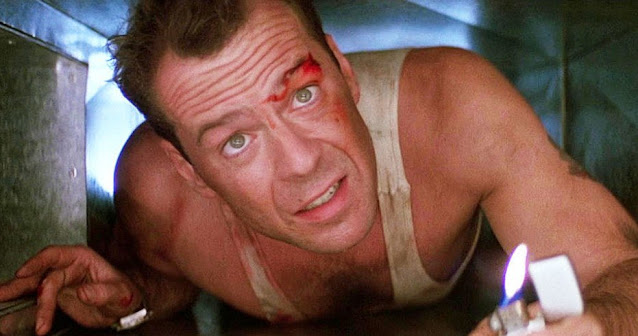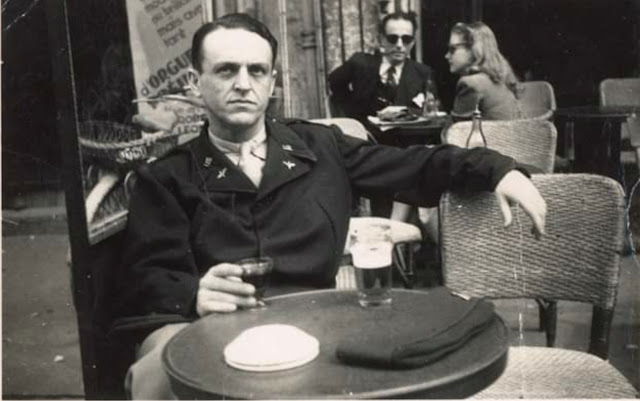"The Birdcage": “Family Values” vs. Valuing Family
Gays and lesbians have been fighting for the right to live openly without discrimination and fear since the end of World War II. Those struggles came to a head one night in 1969, on a routine police raid of the Stonewall Inn, a gay bar in Greenwich Village which was operating without a license. The brutality of that raid triggered a riot that lasted for days, and it was that struggle that provided a rallying point for the gay liberation movement. Afterward, gay rights advocates began forming communities in large urban centers like San Francisco and New York City, organizing awareness campaigns and spreading the idea of “gay pride.” As a result, in the early ‘70s several states reformed their criminal code to decriminalize same-sex relations between consenting adults, and some cities passed anti-discrimination statutes.
 |
| Drag queens Marsha P. Johnson and Sylvia Rivera are credited with triggering the uprising against police oppression that grew into the Stonewall Riots |
The following decade would see many reverses, however, as America entered a long period of neo-conservatism. In the ‘80s, social conservatives attempted to reverse a decline in “traditional family values” brought on by the political and cultural relativism of the previous decade, which had inspired some degree of tolerance toward homosexuality. In this new political climate, public leaders felt comfortable attacking gay people as immoral sexual predators and threats to the family. At the same time, a mysterious disease originally known as “Gay-Related Immune Disorder” began decimating the gay community. As a sign of the times, the government did little to prevent its spread. In fact, President Reagan didn’t speak publicly of the epidemic until six years after its discovery – and only after over 20,000 Americans had died of AIDS.
 |
| AIDS activists protesting at the Stonewall monument in 1989 |
By the early ‘90s, conservative groups were advocating the idea that there was a secret “gay agenda” to make homosexuality acceptable to mainstream society. Gay and lesbian groups countered that there was nothing sinister in their desire to share the same civil rights as heterosexuals, and proposed that anti-gay extremists were simply trying to create a “climate of fear” in which to demonize them. It was into this polarized cultural climate that The Birdcage was released in 1996.
When Robin Williams agreed to star in The Birdcage, he hoped that it would be an important landmark in the struggle for gay liberation. “The whole thing is about reconciliation,” he said. “Reconciling a family, a country, right and left. People are more alike than everybody thinks, and families are families.” After seeing the finished film, producer John Calley agreed. “It’s curiously about family values,” he said. “While the family is obviously eccentric, there’s a sense of decency and honor. The relationships are very warm, very loving.”
Calley said the studio was initially a bit concerned about the politics of the film, especially its portrayal of the arch-conservatives as buffoons or hypocrites. “We had a twinge about this, but Mike Nichols told us, ‘By the time the movie comes out, you won’t be able to parody these guys anymore, they’ll be parodying themselves.’ He said the political climate would become so eccentric that it would make the film accurate. And he was right, wasn’t he?”
Though gay marriage was a radioactive topic in 1996, The Birdcage gently proposed that the most loving family in the movie is the one that society reviles. Though the suggestion was subtle, it was nevertheless revolutionary. After seeing the film, New York Times columnist Frank Rich noted, “From the start, the most eloquent proponents of gay marriage have not been gay people on the left, but gay conservatives who argue that marriage promotes mainstream ideals. As Rich Tafel, head of the Log Cabin Republicans, argues in debates with religious-right opponents of his party, ‘You can’t have it both ways – accusing gays of being promiscuous and then denying us the right to incorporate into monogamous, legally recognized relationships.’”
It would be nearly a decade before same-sex marriage became a legal possibility in the United States. In 1996, just months after The Birdcage was released, Congress passed The Defense of Marriage Act. In the following years, the controversial issue would prove a hot topic for conservatives, and they would succeed in passing constitutional amendments banning same-sex marriage in 26 states.
Yet as conservatives continued to pontificate and legislate against gay marriage, public opinion was shifting. Popular movies and TV shows like The Birdcage, In & Out, Ellen and Will & Grace played a major role in making gays and lesbians seem less strange and threatening – even charming and funny. Meanwhile, the media began to show gay and lesbian families in a more positive light. In 2004, America watched as 4,000 same-sex couples converged on San Francisco to get married under the auspices of then-Mayor Gavin Newsom, despite the fact that the marriages wouldn’t be legally recognized.
 |
| San Francisco Mayor Gavin Newsom at City Hall with two newlyweds, January 2, 2005 |
Same-sex couples who had raised families together for decades attracted the media spotlight, and many onlookers saw the other side of the controversial issue for the first time. Two months later, Massachusetts became the first state to legalize gay marriage. In 2008, with polls showing that 51% of Californians supported the right of same-sex couples to marry, the California Supreme Court declared gay marriage legal in California.
Though director Mike Nichols tried to avoid getting caught up in the politics surrounding The Birdcage, he and screenwriter Elaine May believed that 1996 was the perfect time to reintroduce the subject of gay families. “Tolstoy said it a century ago – all families are the same,” he said. “It’s true. The movie concerns a gay family, a very loyal and loving family. It’s suggesting that the value of family is far more important than anyone’s notion of family values, and that the two are inseparable. What the film really says is that we’re all the same. We’re all people trying to get through life.”
“There are no politics to a joke,” Nichols insisted. “We live in a free society, and people should be free to live as they choose.”
Jonathan Alter, “Robin Williams Uncaged,” USA Weekend, 3/1/96
Bernard Weintraub, “Birdcage Shows Growth in Older Audience’s Power,” New York Times, 3/12/96
Frank Rich, “Beyond The Birdcage,” New York Times, 3/13/96
Mal Vincent, “Director and Stars Talk about Making Hit Comedy The Birdcage,” Virginian-Pilot, 3/14/96
Brendan Lemon, “Nichols & … Timing,” Interview, 4/98


Comments